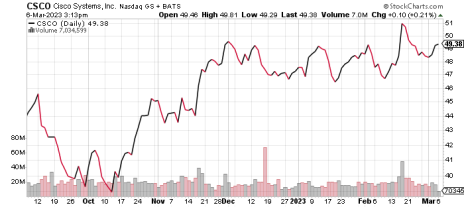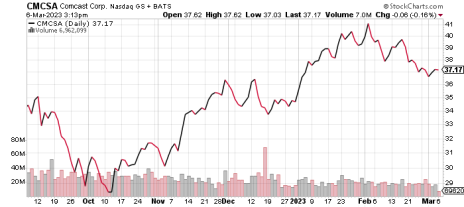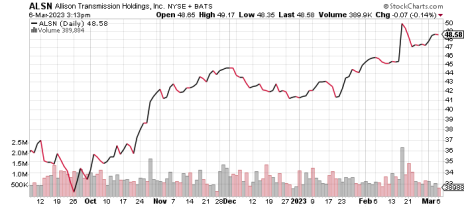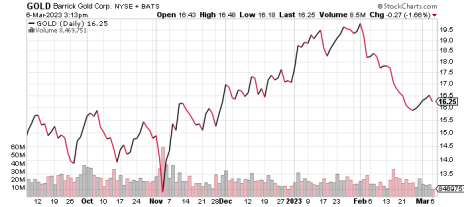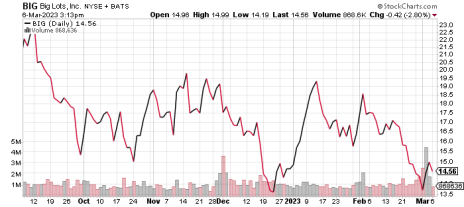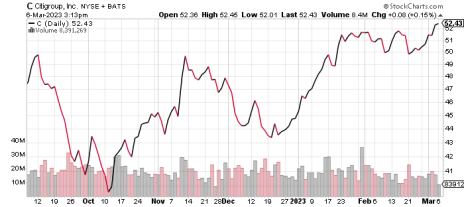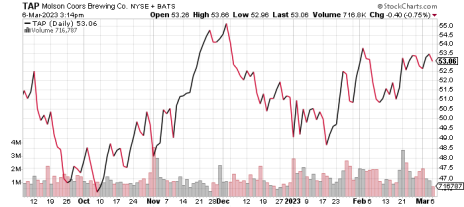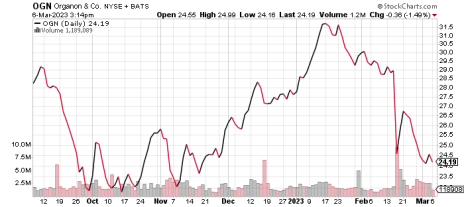From Peace Dividend to War Tax?
When the Berlin Wall fell in 1989, followed by the collapse of the Soviet Union in 1991, the world was left with a single superpower. That superpower promoted world trade, a rules-based global order, economic integration and the spread of innovations. All this helped facilitate faster economic growth. With the fading of military tensions, military spending could be relaxed. Essentially eliminating the threat of nuclear war eased the minds of much of the populace. All of these benefits produced a peace dividend that paid out over the following 30 years.
Unfortunately, open war has returned to Europe while nearly all nations around the world are re-arming for real and potential conflicts. The end game of this reversal is unknowable, but what is knowable is that the peace dividend is gone. What is replacing it is a war tax.
We estimate that the war tax is currently small. Defense spending in the United States is currently budgeted at $817 billion for fiscal 2023, equal to about 3.1% of the country’s GDP. In the 1970s, the country’s defense spending ran at about 5% of the GDP and trended around 8% in the 1960s. It would seem reasonable that U.S. defense spending would return to at least 4% of GDP, or about $1 trillion. Other major nations are ramping their spending by roughly 0.5% - 1% of GDP. This is a direct war tax on these countries. This tax will likely increase, adding pressure to already-strained budgets.
While more difficult to estimate, the indirect war tax on global trade is starting to increase. We might roughly estimate this as a 1-2% increase in the pace of inflation and an incremental drag on global economic growth. A specific example can be found with Apple, which is shifting some of its production from China to India – this creates one-time transition and construction costs as well as what are likely to be permanently higher structural costs. Apple’s move is being replicated in small and large steps by producers around the globe.
Higher inflation and slower growth eventually work their way into the cost of capital. While separating the war tax from other factors is impossible, we can reasonably estimate that perhaps 1 percentage point of the elevated interest rates is attributable to the war tax. Higher geopolitical risks perhaps add another point to the equity risk premium. Chinese-based companies that trade in the United States are seeing elevated geopolitical risk given their sharply trimmed share prices. Companies with high exposure to China could readily see weaker share prices and wider credit spreads if they don’t adjust their supply chains.
While difficult to measure, the direction is clear. Geopolitics is shifting from a tailwind to a headwind. Like flying in a jet, tailwinds make for faster and smoother travel. Headwinds slow the pace of travel while making for a bumpier journey. It probably means that a re-inflation of the stock market bubble isn’t just around the corner.
For value investors, this reduces the opportunity cost (risk) from missing out on a huge market run of hyper-growth tech stocks. And, it tilts the field in favor of discounted shares that are backed by real earnings and good balance sheets.
Share prices in the table reflect Monday, March 6 closing prices. Please note that prices in the discussion below are based on mid-day March 6 prices.
Note to new subscribers: You can find additional color on past earnings reports and other news on recommended companies in prior editions and weekly updates of the Cabot Undervalued Stocks Advisor on the Cabot website.
Send questions and comments to Bruce@CabotWealth.com.
Today’s Portfolio Changes
Organon (OGN) – Moving from Buy to Sell.
Portfolio Changes Since Last Month
State Street Corp. (STT) – Moving the shares from Hold to Sell.
Dow (DOW) – Moving the shares from Buy to Sell.
Gates Industrial (GTES) – Raising our price target from 14 to 16.
Allison Transmission (ALSN) – Raising our price target from 48 to 54.
Upcoming Earnings Reports
Aviva plc (AVVIY) – Wednesday, March 8
Growth & Income Portfolio
Growth & Income Portfolio stocks are generally higher-quality, larger-cap companies that have fallen out of favor. They usually have some combination of attractive earnings growth and an above-average dividend yield. Risk levels tend to be relatively moderate, with reasonable debt levels and modest share valuations.
| Stock (Symbol) | Date Added | Price Added | 3/6/23 | Capital Gain/Loss | Current Dividend Yield | Price Target | Rating |
| Cisco Systems (CSCO) | 11/18/20 | 41.32 | 49.39 | 19.50% | 3.20% | 66 | Buy |
| Comcast Corp (CMCSA) | 10/26/22 | 31.5 | 37.08 | 17.70% | 2.90% | 42 | HOLD |
| Current Price | 2023 EPS Estimate | 2024 EPS Estimate | Change in 2023 Estimate | Change in 2024 Estimate | P/E 2023 | P/E 2024 | |
| CSCO | 49.56 | 3.76 | 4.03 | 0.0% | 0.0% | 13.2 | 12.3 |
| CMCSA | 37.32 | 3.65 | 4.10 | -0.1% | 0.0% | 10.2 | 9.1 |
Cisco Systems (CSCO) is facing revenue pressure as customers migrate to the cloud and thus need less of Cisco’s equipment and one-stop-shop services. Cisco’s prospects are starting to improve under a relatively new CEO, who is shifting Cisco toward a software and subscription model and is rolling out new products, helped by its strong reputation and entrenched position within its customers’ infrastructure. The company is highly profitable, generates vast cash flow (which it returns to shareholders through dividends and buybacks) and has a very strong balance sheet.
On February 15, Cisco reported impressive fiscal second-quarter results that were ahead of consensus estimate and raised its full-year revenue and earnings guidance by about 6%. The company raised its dividend by 1 cent per quarter, to $0.39/share. Overall, the company is maintaining its position as a critical provider of a broad array of tech gear and software even as other mega-cap tech companies that focus on only one or two niches are having to retrench. The company’s cash flow machine is running at full tilt, with operating cash flow of $4.7 billion nearly doubling the year-ago pace. Cisco’s balance sheet strengthened despite the $2.8 billion in year-to-date share buybacks and dividends. Cash in excess of debt rose by $3.4 billion, to a total of $13.2 billion. However, we are wary of the ongoing gross margin slippage and the sharp decline in new orders. For now, we will keep our Buy rating.
Cisco is presenting at the Morgan Stanley Tech, Media and Telecom Conference on March 8 at 11 a.m. Eastern Time. Investors can watch the live stream via the Cisco investor relations website.
CSCO shares rose 2% for the week and have 33% upside to our 66 price target. The valuation is attractive at 9.2x EV/EBITDA and 13.2x earnings per share. The 3.1% dividend yield adds to the appeal of this stock. BUY
Comcast Corporation (CMCSA) – With $120 billion in revenues, Comcast is one of the world’s largest media and entertainment companies. Its properties include Comcast cable television, NBCUniversal (movie studios, theme parks, NBC, Telemundo and Peacock), and Sky media. The Roberts family holds a near-controlling stake in Comcast. Comcast shares have tumbled due to worries about cyclical and secular declines in advertising revenues and a secular decline in cable subscriptions as consumers shift toward streaming services, as well as rising programming costs and incremental competitive pressure as phone companies upgrade their fiber networks.
However, Comcast is a well-run, solidly profitable and stable company that will likely continue to successfully fend off intense competition while increasing its revenues and profits, as it has for decades. The company generates immense free cash flow which is more than enough to support its reasonable debt level, generous dividend and sizeable share buybacks.
Comcast is presenting at the Morgan Stanley Tech, Media and Telecom Conference on March 8 at 11:35 a.m. Eastern Time. Investors can watch the live stream via the Comcast investor relations website.
Comcast shares were unchanged for the past week and have 13% upside to our 42 price target. The shares have limited upside, but the earnings report was reasonable enough to keep the stock a bit longer. The shares offer an attractive 2.9% dividend yield. HOLD
Buy Low Opportunities Portfolio
Buy Low Opportunities Portfolio stocks include a wide range of value opportunities. These stocks carry higher risk than our Growth & Income stocks yet also offer more potential upside. This group may include stocks across the quality and market cap spectrum, including those with relatively high levels of debt and a less-clear earnings outlook. The stocks may not pay a dividend. In all cases, the shares will trade at meaningful discounts to our estimate of fair value.
| Stock (Symbol) | Date Added | Price Added | 3/6/23 | Capital Gain/Loss | Current Dividend Yield | Price Target | Rating |
| Allison Transmission Hldgs (ALSN) | 2/22/22 | 39.99 | 48.56 | 21.40% | 1.90% | 54 | Buy |
| Aviva (AVVIY) | 3/3/21 | 10.75 | 10.77 | 0.20% | 6.80% | 14 | Buy |
| Barrick Gold (GOLD) | 3/17/21 | 21.13 | 16.23 | -23.20% | 2.50% | 27 | Buy |
| BigLots (BIG) | 4/12/22 | 35.24 | 14.63 | -58.50% | 8.20% | 25 | HOLD |
| Citigroup (C) | 11/23/21 | 68.1 | 52.29 | -23.20% | 3.90% | 85 | Buy |
| Gates Industrial Corp (GTES) | 8/31/22 | 10.71 | 14.28 | 33.30% | 0.00% | 16 | Buy |
| Molson Coors (TAP) | 8/5/20 | 36.53 | 53.2 | 45.60% | 2.90% | 69 | Buy |
| Organon (OGN) | 6/7/21 | 31.42 | 24.18 | -23.00% | 4.60% | 46 | SELL |
| Sensata Technologies (ST) | 2/17/21 | 58.57 | 51.14 | -12.70% | 0.90% | 75 | Buy |
| Current Price | 2023 EPS Estimate | 2024 EPS Estimate | Change in 2023 Estimate | Change in 2024 Estimate | P/E 2023 | P/E 2024 | |
| ALSN | 48.62 | 6.07 | 6.70 | 0.1% | 3.6% | 8.0 | 7.3 |
| AVVIY | 10.78 | 0.54 | 0.61 | 0.0% | 0.3% | 19.9 | 17.7 |
| GOLD | 16.39 | 0.79 | 1.02 | 0.1% | -2.0% | 20.8 | 16.1 |
| BIG | 14.58 | (4.02) | (2.44) | 337.0% | -245.2% | (3.6) | (6.0) |
| C | 52.21 | 5.90 | 6.95 | 0.0% | -0.1% | 8.8 | 7.5 |
| GTES | 14.33 | 1.18 | 1.35 | 0.0% | 0.0% | 12.1 | 10.6 |
| TAP | 53.23 | 4.07 | 4.31 | -0.4% | -0.7% | 13.1 | 12.3 |
| OGN | 24.62 | 4.34 | 4.72 | -3.0% | -2.9% | 5.7 | 5.2 |
| ST | 51.68 | 3.78 | 4.32 | 0.0% | 0.0% | 13.7 | 12.0 |
Allison Transmission Holdings, Inc. (ALSN) – Allison Transmission is a midcap manufacturer of vehicle transmissions. While many investors view this company as a low-margin producer of car and light truck transmissions that is destined for obscurity in an electric vehicle world, Allison actually produces no car or light truck transmissions. Rather, it focuses on the school bus and Class 6-8 heavy-duty truck categories, where it holds an 80% market share. Its EBITDA margin is sharply higher than its competitors and on par with many specialty manufacturers. And, it is a leading producer and innovator in electric axles which all electric trucks will require. The company generates considerable free cash flow and has a low-debt balance sheet. Its capable leadership team keeps its shareholders in mind, as the company has reduced its share count by 38% in the past five years.
On February 15, Allison reported a strong fourth quarter, capping an impressive year in which revenues rose 15% and earnings per share rose 34%. The company generated strong free cash flow, allowing it to repurchase 8% of its share count in the year, even as it has trimmed its already-reasonable net debt by 5%. Allison provided incrementally favorable 2023 guidance for a 4% increase in revenues and a similar increase in adjusted EBITDA. Free cash flow was guided to $505 million, about 3% above the 2022 pace. We consider the guidance to be reasonable but perhaps a bit conservative. The company raised its quarterly dividend by 10%, to $0.23/share.
Allison is presenting at the Raymond James 44th Annual Institutional Investors Conference on March 7 at 4 p.m. Eastern Time. Investors can watch the live stream via the company’s investor relations website.
ALSN shares rose 2% in the past week. Given the capable management, healthy fundamentals and reasonable valuation, we recently raised our price target to 54. The shares have 11% upside to this new target. The stock pays a respectable and sustainable 1.9% dividend yield. BUY
Aviva, plc (AVVIY), based in London, is a major European company specializing in life insurance, savings and investment management products. Amanda Blanc, hired as CEO in July 2020, is revitalizing Aviva’s core U.K., Ireland and Canada operations following her divestiture of other global businesses. The company now has excess capital which it is returning to shareholders as likely hefty dividends following a sizeable share repurchase program. We expect that activist investor Cevian Capital, which holds a 5.2% stake, will keep pressuring the company to maintain shareholder-friendly actions.
There was no significant company-specific news in the past week.
Aviva shares rose 1% this past week and have 30% upside to our 14 price target. Based on management’s estimated dividend for 2023, the shares offer a generous 7.1% yield. BUY
Barrick Gold (GOLD), based in Toronto, is one of the world’s largest and highest-quality gold mining companies. About 50% of its production comes from North America, with the balance from Africa/Middle East (32%) and Latin America/Asia Pacific (18%). Barrick will continue to improve its operating performance (led by its highly capable CEO), generate strong free cash flow at current gold prices, and return much of that free cash flow to investors while making minor but sensible acquisitions. Also, Barrick shares offer optionality – if the unusual economic and fiscal conditions drive up the price of gold, Barrick’s shares will rise with it. Given their attractive valuation, the shares don’t need this second (optionality) point to work – it offers extra upside. Barrick’s balance sheet has nearly zero debt net of cash. Major risks include the possibility of a decline in gold prices, production problems at its mines, a major acquisition and/or an expropriation of one or more of its mines.
On February 15, Barrick reported a reasonable fourth quarter. Adjusted earnings of $0.13/share were flat compared to a year ago but 1 cent above the $0.12 consensus estimate. The company is increasing its gold reserves, which rose 10% from a year ago. However, it is missing its gold production goals even as it is spending more to maintain that volume. In brief, we see that Barrick incrementally is trading profitability for growth. Our thesis is based on stable production growth that meets the company’s guidance, and on stable profits and cash flow that can be returned to investors through dividends and buybacks. Barrick is incrementally falling short on all of these metrics – not enough to be worried but we clearly want the company to return to meeting these key checklist items in 2023. Barrick said it would repurchase up to $1 billion of its shares this year. We anticipate that some of this will be funded from borrowings given the nearly debt-free ($342 million) balance sheet and tighter free cash flow. Overall, Barrick remains a solid and well-managed company, and we are keeping our current rating.
There was no significant company-specific news in the past week.
Over the past week, commodity gold ticked up about 2% to $1,856/ounce. The 10-year Treasury yield ticked up to 3.96% while the U.S. Dollar Index (the dollar and gold usually move in opposite directions) ticked down fractionally to 104.25.
Investors and commentators offer a wide range of outlooks for the economy, interest rates and inflation. We have our views but hold these as more of a general framework than a high-conviction posture. Investing in gold-related equities is a long-term decision – investors shouldn’t allow near-term weakness to deter their resolve.
Barrick shares rose 3% in the past week and have 65% upside to our 27 price target. BUY
Big Lots (BIG) – Big Lots is a discount general merchandise retailer based in Columbus, Ohio, with 1,431 stores across 47 states. Its stores offer an assortment of furniture, hard and soft home goods, apparel, electronics, food and consumables as well as seasonal merchandise. Our initial case for Big Lots rested with its loyal and growing base of 22 million rewards members, its appeal to bargain-seeking customers, the relatively stable (albeit low) cash operating profit margin, its positive free cash flow, debt-free balance sheet and low share valuation. Our thesis was deeply rattled by the company’s surprisingly large inventory glut in the first quarter 2022, likely burdening it with new and permanent debt.
Big Lots shares remain high-risk due to the permanent debt balance and the possibility of a suspension or reduction of the dividend.
Big Lots reported a respectable quarter, with an adjusted loss of $(0.28)/share, compared to a $1.75 profit a year ago and estimates for a loss of $(0.66). Revenues fell 11%, with same-store sales falling 13%, but these results were in line with estimates. Adjusted EBITDA of $39 million fell about 65% from a year ago but was more than double the $15 million estimate.
On the positive side, the inventory glut appears to be fully worked down, as inventories were 7% below year-ago levels and down 15% from third-quarter levels. The gross margin slipped only 1 percentage point (100 basis points) but could have been worse. Overhead expenses fell 3%, helping to cushion the loss. Big Lots maintained its $0.30/share quarterly dividend.
On the negative side, we are left with a company that, while it will likely fully recover operationally, now has a permanent debt burden of about $300 million – generated by the cumulative loss on a year’s worth of excess inventory that it had to sell at what we estimate to be 8% below cost. The hard-dollar value lost is over $10/share. It is almost certainly higher given the loss of credibility which we might estimate is perhaps 1 valuation turn.
Also, compared with Macy’s, whose large investments in tech has proven its worth, we believe that Big Lots is behind the technology curve, likely using dated methods to manage its inventory. This caps Big Lots’ long-term potential, even as it might get a season right by luck and generate high short-term profits that light up investor sentiment.
However, the company generates enough free cash flow to endure and is well-established as a go-to discount retail store. Cost-cutting, lower freight and better inventory management should make 2023 substantially better than 2022, although the company will likely produce a net loss. At 2.5x our depressed but expected post-recovery earnings, the shares provide considerable upside potential, even as the downside risks have been trimmed. No change to our HOLD rating.
Big Lots shares rose 1% this past week. The stock has 71% upside to our revised 25 price target. The shares offer an 8.2% dividend yield, although, as noted, investors should not rely on this dividend being sustained. HOLD
Citigroup (C) – Citi is one of the world’s largest banks, with over $2.4 trillion in assets. The bank’s weak compliance and risk-management culture led to Citi’s disastrous and humiliating experience in the 2009 global financial crisis, which required an enormous government bailout. The successor CEO, Michael Corbat, navigated the bank through the post-crisis period to a position of reasonable stability. Unfinished, though, is the project to restore Citi to a highly profitable banking company, which is the task of new CEO Jane Fraser.
This past week, the yield spread between the 90-day T-bill and the 10-year Treasury bond, which approximates the drivers behind Citi’s net interest margin, narrowed fractionally to negative 89 basis points (100 basis points in one percentage point).
Until inflation relents to a 2% pace for perhaps 6 months, we see little chance for the Fed to declare “mission accomplished.” The recent CPI and other reports suggest that the 6-month clock hasn’t yet started.
The next CPI report will be released on March 14 at 8:30 a.m. Eastern time.
Sentiment is shifting toward higher-for-longer interest rates, as inflationary pressures seem to be abating more slowly than most investors had hoped. Some commentators are calling for the Fed Funds rate to approach 6%. Such a rate may not fully relieve inflation pressures but would clearly be a depressant for stock prices.
Like many banks, Citi is starting to lay off some of its staff. The bank’s total layoffs are likely to be less than 1% of its total staff.
Citi shares trade at 64% of tangible book value and 8.8x estimated 2023 earnings. The remarkably low valuations assume an unrealistically dim future for Citi.
Citi shares rose 3% in the past week and have 63% upside to our 85 price target. Citigroup investors enjoy a 3.9% dividend yield.
When comparing Citi shares with a U.S. 10-year Treasury bond, Citi offers a comparable yield and considerably more upside potential (about 60% according to our work vs. 0% for the Treasury bond). Clearly, the Citi share price and dividend payout carry considerably more risk than the Treasury bond, but at the current valuation, Citi shares would seem to have a remarkably better risk/return trade-off. BUY
Gates Industrial Corp, plc (GTES) – Gates is a specialized producer of industrial drive belts and tubing. While this niche might sound unimpressive, Gates has become a leading global manufacturer by producing premium and innovative products. Its customers depend on heavy-duty vehicles, robots, production and warehouse machines and other equipment to operate without fail, so the belts and hydraulic tubing that power these must be exceptionally reliable. Few buyers would balk at a reasonable price premium on a small-priced part from Gates if it means their million-dollar equipment keeps running. Even in automobiles, which comprise roughly 43% of its revenues, Gates’ belts are nearly industry-standard for their reliability and value. Helping provide revenue stability, over 60% of its sales are for replacements. Gates is well-positioned to prosper in an electric vehicle world, as its average content per EV, which require water pumps and other thermal management components for the battery and inverters, is likely to be considerably higher than its average content per gas-powered vehicle.
The company produces wide EBITDA margins, has a reasonable debt balance and generates considerable free cash flow. The management is high-quality. In 2014, private equity firm Blackstone acquired Gates and significantly improved its product line-up and quality, operating efficiency, culture and financial performance. Gates completed its IPO in 2018, with Blackstone retaining a 63% stake today.
On February 9, Gates reported an encouraging fourth quarter and provided reasonably strong guidance for 2023 that implied steady-to-rising revenues and profits rather than a recessionary decline. Fourth-quarter free cash flow rose 55% as profits rose and inventory was sold down. Total debt fell about 3%. Leverage remains reasonable at 2.8x EBITDA, although it ticked up due to lower EBITDA. Gates continues to follow a common strategy of companies owned/controlled by reputable private equity firms: generating wide profit margins and high free cash flow conversion (free cash flow relative to adjusted net income). We strongly agree with this strategy.
There was no significant company-specific news in the past week.
GTES shares rose 2% in the past week and have 12% upside to our new 16 price target. We recently raised our price target from 14 to 16 due to the company’s capable management, strong franchise within its market, still-improving fundamentals and reasonable valuation. BUY
Molson Coors Beverage Company (TAP) is one of the world’s largest beverage companies, producing the highly recognized Coors, Molson, Miller and Blue Moon brands as well as numerous local, craft and specialty beers. About two-thirds of its revenues come from the United States, where it holds a 24% market share. Investors worry about Molson Coors’ lack of revenue growth due to its relatively limited offerings of fast-growing hard seltzers and other trendier beverages. Our thesis for this company is straightforward – a reasonably stable company whose shares sell at an overly discounted price. Its revenues are resilient, it produces generous cash flow and is reducing its debt. A new CEO is helping improve its operating efficiency and expand carefully into more growthier products. The company recently reinstated its dividend.
On February 21, Molson Coors reported a healthy 4% increase in revenues (local currency) and a strong 22% increase in EBITDA. Weak volumes (down 5%) were more than offset by higher prices and favorable mix (+11%), suggesting that the company’s brands remain popular, that customers are accepting higher prices, and that the “premiumization” strategy is working. The quarter capped a good year for Molson Coors, in which revenues rose 7% (local currency) and underlying net income was essentially flat/stable. Full-year volumes slipped 2% but pricing added 9% to sales.
In addition to resilient full-year revenues, the company produced reasonably steady cash flow ($850 million) – a bit below our $1 billion baseline but due mostly to understandable increases in capital spending to upgrade its breweries. Net debt fell by 9%, or $560 million, and is below the 3.0x leverage mark.
Guidance for 2023 calls for incremental revenue and profit growth but about $100 million more in capital spending. Underlying free cash flow was guided to $1 billion, +/- 10%. In essence, for another year of stable results and generous free cash flow.
Overall, our thesis remains on track.
There was no significant company-specific news in the past week.
TAP shares fell 1% in the past week and have 30% upside to our 69 price target. The stock remains cheap, particularly on an EV/EBITDA basis, or enterprise value/cash operating profits, where it trades at 8.7x estimated 2023 results, still among the lowest valuations in the consumer staples group and below other brewing companies. BUY
Organon & Company (OGN), a spin-off from Merck, specializes in patented women’s healthcare products and biosimilars, and also has a portfolio of mostly off-patent treatments.
On February 16, Organon reported a complicated quarter that left us needing more time and information to assess our investment. We have completed that assessment and are moving the shares from Buy to Sell.
The spin-off was to produce at least stable and large free cash flows with a reasonable potential for growth with, essentially, traits of a modern era “cigar butt” that was a dull but undervalued asset worthy of a higher share price. However, the management is morphing Organon into a company with more expensive growth aspirations that are weighing down free cash flow even as revenues continue to fall.
Revenue growth is elusive even excluding currency changes. We see little likelihood of enduring growth from organic sources due to chronic competitive headwinds and regulatory-driven pricing pressure in nearly all of its geographic markets. Management’s expectations for the biosimilars portfolio continue to weaken, including for the upcoming U.S. launch of the Humira biosimilar product.
Related to difficult revenue growth is ongoing pressure on Organon’s gross margin. While the company met its guidance for 2022 gross margins of mid-60%, forward guidance for 2023 is for about 63%. The pricing pressure isn’t likely to be alleviated in future years.
Management is spending more on R&D and selling/promotions to boost its growth prospects. But this is weighing on the EBITDA margin. Operating costs rose by nearly a percentage point in the fourth quarter and by over three percentage points for the full year. These costs are likely to continue to tick upward, leaving Organon structurally less profitable. And, we get a sense that management has great confidence in its R&D capabilities to create impressive new products and identify/acquire others at bargain prices. We aren’t so confident.
With limited prospects for organic growth, the company is reverting to buying revenues in the form of acquisitions and other revenue deals. But these are likely to be recurring costs (in essence, R&D by another name). And, Organon’s balance sheet is fully levered already (about a third carries interest at floating rates, which is boosting Organon’s interest costs), leaving little room for sizeable acquisitions unless it issues shares, which would be heavily dilutive at the current stock price.
Further draining its free cash flow is dilution from stock awards. To prevent dilution, the company will need to spend around $60 million a year on buybacks.
Like many spin-offs, Organon’s separation from its parent hasn’t been cheap, given its ongoing transition costs, hobbled R&D effort and elevated debt burden. This unfortunate legacy is weighing on the company.
With the dour outlook, is there a contrarian play here? Possibly, but we believe that it isn’t worth the risk. Organon could turn itself around, but the upside in our view is that this might yield a 30 stock in perhaps a few years. The implied 20% upside potential, even with a 4.5% dividend yield, isn’t worth the risk of chronic disappointments that continue to chip away at Organon’s earnings power. And, if Organon’s earnings weaken, the yield will provide little support: a 6% dividend yield on the $1.12/share annual dividend implies an 18.67 stock price, down 24% from here. On a valuation basis, the stock currently trades at a 7.0x estimated 2025 EBITDA – hardly a bargain given the company’s chronic issues.
So, we are moving the shares from Buy to Sell. We are moving it from Buy to Sell in the Cabot Turnaround Letter as well. From inception, OGN shares produced a roughly (-6%) total return, including dividends, from our initial Recommendation.
There was no significant company-specific news in the past week. SELL
Sensata Technologies (ST) is a $3.8 billion (revenues) producer of nearly 47,000 highly engineered sensors used by automotive (60% of revenues), heavy vehicle, industrial and aerospace customers. About two-thirds of its revenues are generated outside of the United States, with China producing about 21%. Investors undervalue Sensata’s durable franchise. Its sensors are typically critical components that generally produce high profit margins. As the sensors’ reliability is vital to safety and performance, customers are reluctant to switch to another supplier that may have lower prices but also lower or unproven quality. Sensata has an arguably under-leveraged balance sheet and generates healthy free cash flow. The relatively new CEO will likely continue to expand the company’s growth potential through acquisitions. Electric vehicles are an opportunity as they expand Sensata’s reachable market.
There was no significant company-specific news in the past week.
ST shares rose 3% in the past week and have 45% upside to our 75 price target. Our price target looks optimistic in light of the broad market sell-off, but we will keep it for now, even as it may take longer for the shares to reach it. BUY
The next Cabot Undervalued Stocks Advisor issue will be published on April 4, 2023.

